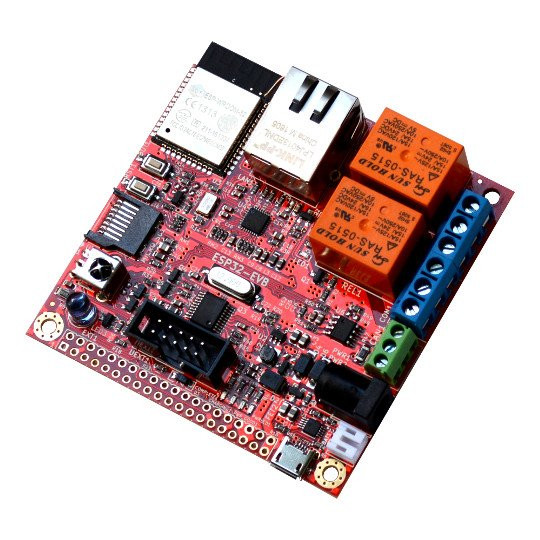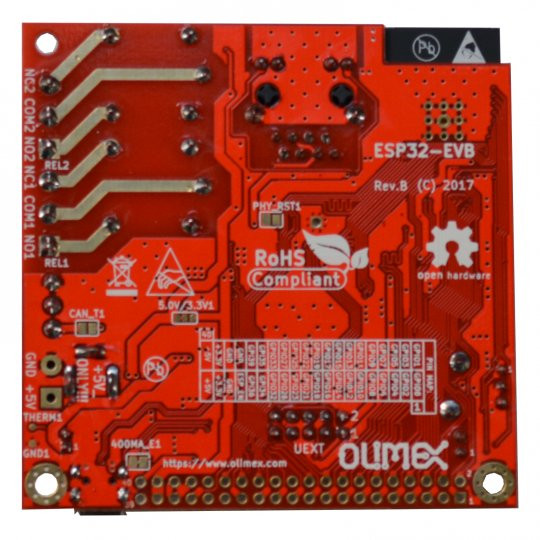One of the new feature of Espressif ESP32 SoC over ESP8266 is the inclusion of an Ethernet MAC interface, but so far few boards come with an RJ45 jacks. ESP32 Monster board is an option, also including an OLED Display and CAN Bus, and sold on Tindie for $35, but Olimex has now stocked their ESP32-EVB board with Ethernet, CAN Bus, and two relays, and you can purchase it for 26 Euros per unit, and less in larger quantities.
 Olimex ESP32-EVB Rev. B specifications:
Olimex ESP32-EVB Rev. B specifications:
- Wireless Module – ESP32-WROOM32 module with 802.11 b/g/n WiFi and Bluetooth LE
- Wired Connectivity – 10/100M Ethernet with RJ45 jack (via LAN8710A)
- External Storage – micro SD slot
- Relays – 2x 10A/250VAC relays with LED status
- Expansion
- 40-pin GPIO female header (2.54mm pitch)
- UEXT connector for sensors and modules
- CAN Bus
- USB – 1x micro USB port for debugging (CH340T) and power
- Misc – Reset and user buttons, IR receiver and transmitter with up to 5 meter range
- Power Supply
- 5V via power jack or micro USB port
- LiPo charger and step up converter allowing ESP32-EVB to run from LiPo battery
- Dimensions – 75 x 75 mm
The specifications are a little different compared to the Rev. A prototype shown in February, as they added IR transmitter and receiver, a CAN bus, and a micro USB port for debugging, which increases the size of the PCB, and also explains why the price went up from an expected 22 Euros to 26 Euros for the final board.
 The board is open source hardware, and you’ll find hardware design files on Github. The software directory is empty for now, but the Tindie page about ESP32 Monster board indicates that “Ether and CAN programming requires ESP-IDF environment and still not by Arduino IDE”, so if you want to use the latter you may have wait a little longer. Olimex is also planning for a color 2.8″ LCD 320×240 pixel display board connected through UEXT header.
The board is open source hardware, and you’ll find hardware design files on Github. The software directory is empty for now, but the Tindie page about ESP32 Monster board indicates that “Ether and CAN programming requires ESP-IDF environment and still not by Arduino IDE”, so if you want to use the latter you may have wait a little longer. Olimex is also planning for a color 2.8″ LCD 320×240 pixel display board connected through UEXT header.

Jean-Luc started CNX Software in 2010 as a part-time endeavor, before quitting his job as a software engineering manager, and starting to write daily news, and reviews full time later in 2011.
Support CNX Software! Donate via cryptocurrencies, become a Patron on Patreon, or purchase goods on Amazon or Aliexpress




